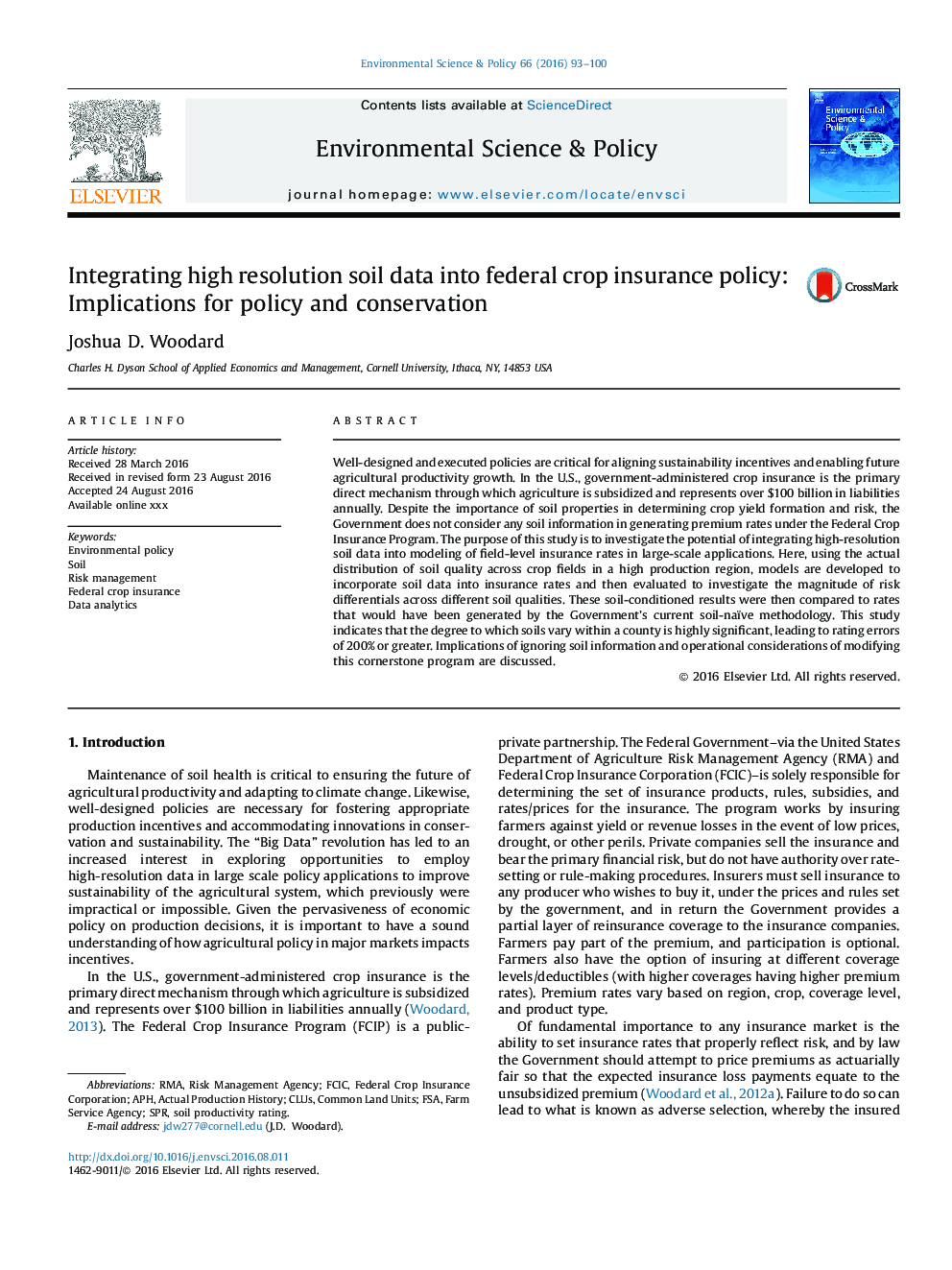| کد مقاله | کد نشریه | سال انتشار | مقاله انگلیسی | نسخه تمام متن |
|---|---|---|---|---|
| 1053409 | 1485042 | 2016 | 8 صفحه PDF | دانلود رایگان |
• Integrating High Resolution Soil Data into Federal Crop Insurance Policy: Actuarial, Policy, and Sustainability Implications.
• United States agriculture is primarily supported through subsidized Federal Crop Insurance.
• Soil data are not incorporated into the pricing, leading to adverse selection.
• Omitting soil data leads to rating errors in excess of 200% in typical cases.
• Integrating soil data will improve the sustainability of this cornerstone policy.
Well-designed and executed policies are critical for aligning sustainability incentives and enabling future agricultural productivity growth. In the U.S., government-administered crop insurance is the primary direct mechanism through which agriculture is subsidized and represents over $100 billion in liabilities annually. Despite the importance of soil properties in determining crop yield formation and risk, the Government does not consider any soil information in generating premium rates under the Federal Crop Insurance Program. The purpose of this study is to investigate the potential of integrating high-resolution soil data into modeling of field-level insurance rates in large-scale applications. Here, using the actual distribution of soil quality across crop fields in a high production region, models are developed to incorporate soil data into insurance rates and then evaluated to investigate the magnitude of risk differentials across different soil qualities. These soil-conditioned results were then compared to rates that would have been generated by the Government’s current soil-naïve methodology. This study indicates that the degree to which soils vary within a county is highly significant, leading to rating errors of 200% or greater. Implications of ignoring soil information and operational considerations of modifying this cornerstone program are discussed.
Journal: Environmental Science & Policy - Volume 66, December 2016, Pages 93–100
